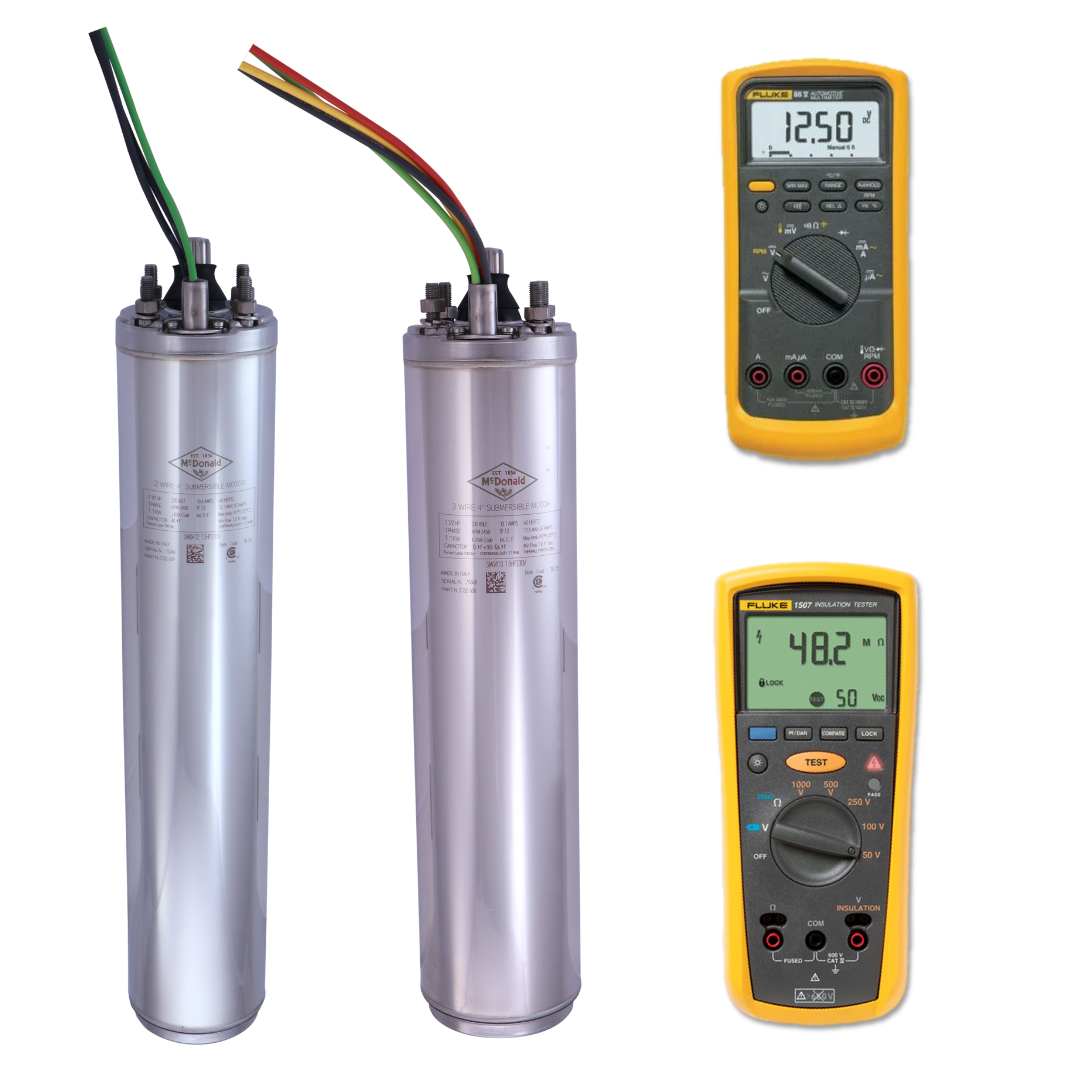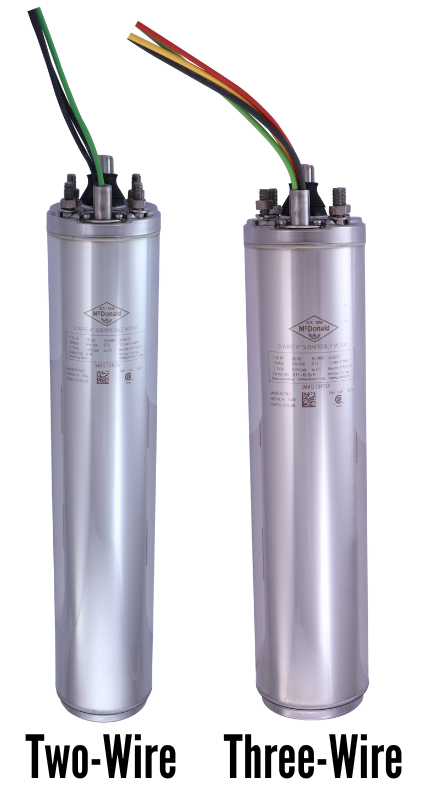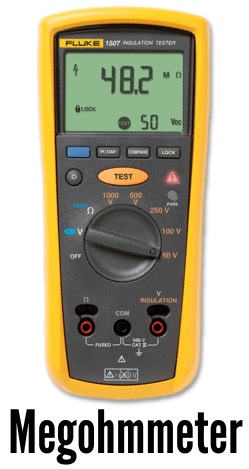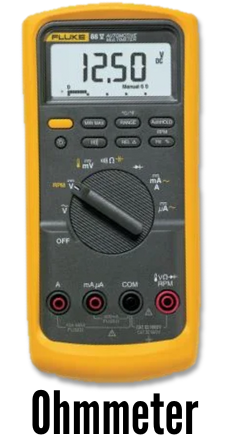Submersible Pump Motor Troubleshooting: Winding Resistance and Insulation Resistance

Submersible Pump Motor Troubleshooting: Winding Resistance and Insulation Resistance

A submersible pump motor contains leads/wires, which supply power to the motor windings. Submersible pumps either come with two wires (plus one addition wire, which is a grounded lead) or three wires (plus one additional wire, which is a grounded lead). Two-wire motors are 1.5 HP and below and do not require a control box as starting components are internal to the motor. Three-wire motors require an external control box or starter. Two-wire motor leads connect to the pressure switch while three-wire motors leads connect to the control box.
Due to the importance a motor holds on the submersible pump system, if the pump were to malfunction, testing the motor is a good place to start in order to get a diagnosis. Since the pump is located in the well, ensuring the motor is functional is highly recommended prior to the installation. This can be done by measuring and testing the winding resistance and insulation resistance, which determine if the motor is defective. These tests serve as a troubleshooting tactic for both new and used motors.

The submersible motor not only drives the pump but the horsepower of this component, matched with the pump, also determines the pressure and gallons per minute provided by the well system. Based off of its importance to the function of the pump, it is pertinent that the motor is operating efficiently – and winding resistance and insulation resistance testing are two ways in which to test this fact.
To learn more about how to measure and test a submersible pump motor’s winding resistance and insulation resistance, take the ‘Checking Submersible Pump Motor Insulation Resistance with a Megohmmeter’ and ‘Checking Winding Resistance of a Submersible Pump with an Ohmmeter’ AYU courses.

